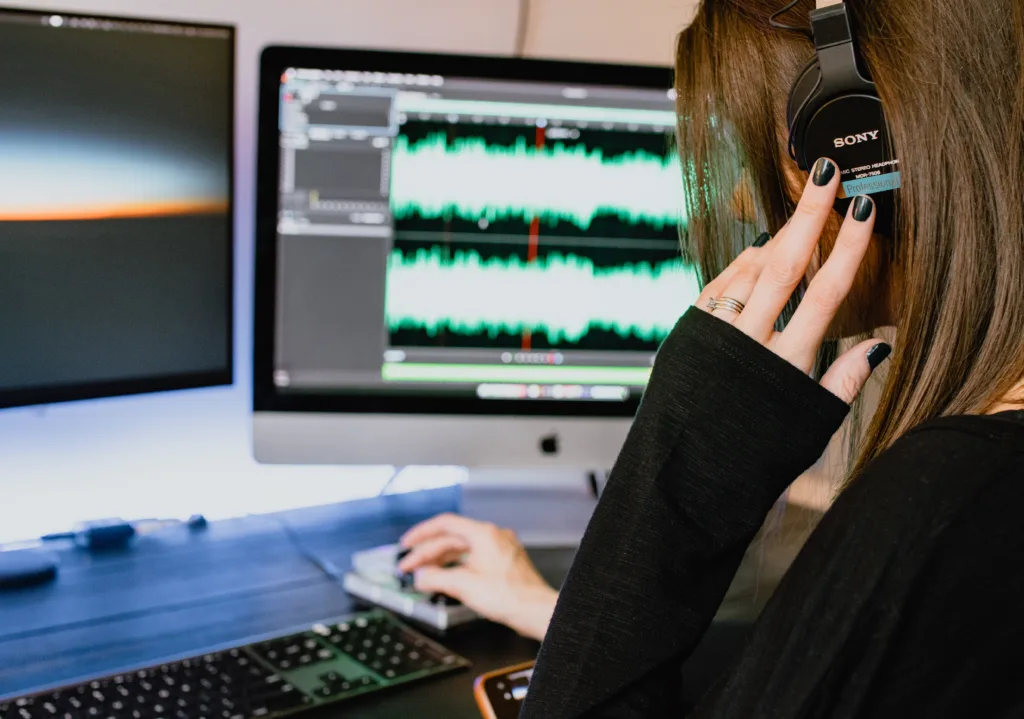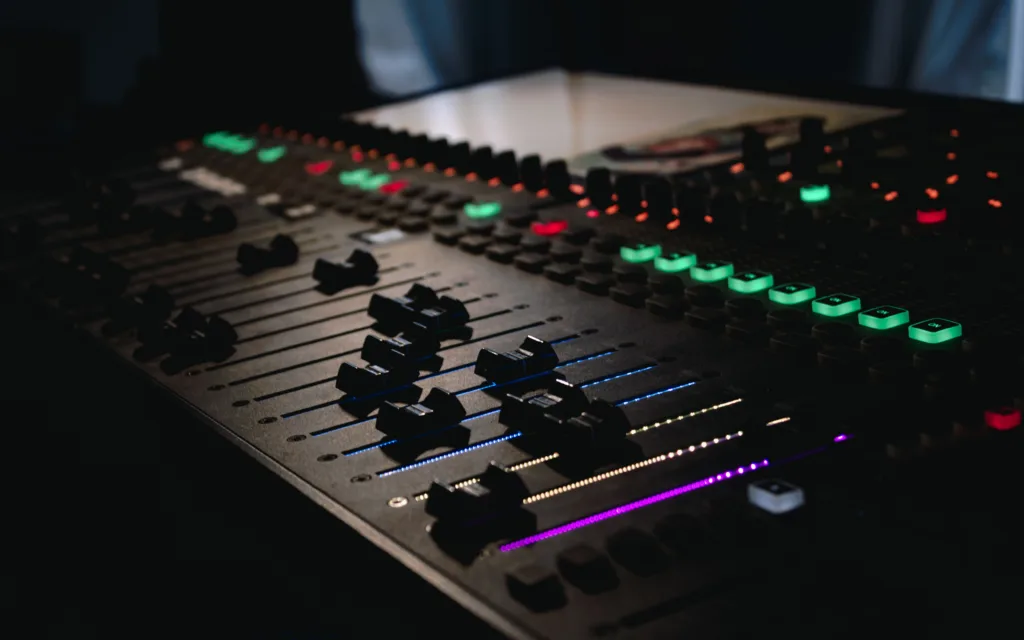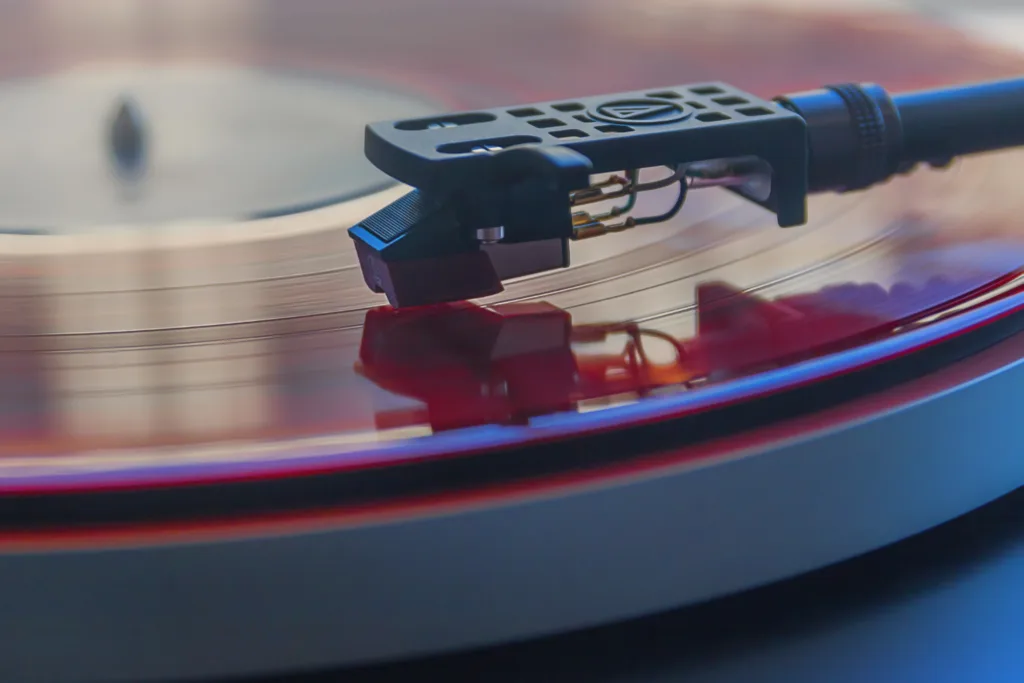When it comes to music, the quality of the audio file can make a big difference in how enjoyable it is to listen to. You may have heard terms like bitrate and kbps thrown around, but what do they actually mean and does a higher kbps mean better quality?
First, let’s define some terms. Bitrate refers to the amount of data that is transferred per second in an audio file. It is measured in kilobits per second (kbps). The higher the bitrate, the more data is bing transferred, which can result in better sound quality.
So, does a higher kbps mean better quality? In general, the answer is yes. A higher bitrate means that more data is being transferred, which can result in more accurate measurements of the signal. This can lead to a clearer, more detailed sound with less distortion.
For example, a 128 kbps audio file will have 128 kilobits of data stored for every second of audio. In contrast, a 320 kbps audio file will have 320 kilobits of data stored for every second of audio. This extra data can result in a richer, more detailed sound.
However, it’s important to note that the quality of an audio file is not solely determined by the bitrate. Other factors, such as the recording and mastering processes, can also have a significant impact on sound quality. Additionally, the quality of your headphones or speakers will also affect how you hear the music.
It’s also worth noting that higher bitrate files will take up more storage space on your device. So, while a 320 kbps audio file may sound better than a 128 kbps file, it will also take up more storage on your phone or computer.
A higher kbps generally means better quality audio, but it’s not the only factor to consider. The recording and mastering processes, as well as the quality of your headphones or speakers, will also play a role in how enjoyable the music is to listen to. Ultimately, it’s up to personal preference and balancing sound quality with storage space.
Is 320kbps Audio Quality Better Than 128kbps?
320kbps audio files are better than 128kbps audio files. The difference lies in the level of audio compression used to create the file. 320kbps files use less audio compression than 128kbps files, which means that more audio data is preserved in the final file. This results in a higher quality audio file, with more detail and nuance in the sound. 320kbps files are especially noticeable when listening to music with headphones or oher high-quality audio equipment. However, it is important to note that the quality of the playback device also plays a significant role in the overall sound quality. So, while 320kbps is better than 128kbps, the quality of your headphones or speakers will also impact the final listening experience.

What Is Considered High Quality in Terms of Kbps?
High quality audio typically has a bitrate of at least 320 kbps. This is the bitrate commonly used for high-quality MP3 files and is considered to be the minimum standard for high-quality audio. However, for even higher quality audio, the bitrate can go up to 9,216 kbps for High-Resolution Audio, which is neary seven times higher than that of CDs and almost 29 times higher than that of MP3s. The higher the bitrate, the more accurately the signal is measured, resulting in a clearer and more detailed sound. Ultimately, the ideal bitrate for high quality audio depends on the individual’s preferences and the equipment being used to listen to the audio.
Which is Better: Lower or Higher Kbps?
The answer to whether lower or higher Kbps is better depends on the context. Generally speaking, a higher Kbps (kilobits per second) indicates a higher sound quality of the audio file. This is because a higher Kbps means more data is bing transmitted per second, resulting in a more detailed and refined sound.
However, a higher Kbps also means a larger file size, which can result in longer download times and take up more storage space. In some cases, such as when streaming audio over a limited internet connection, a lower Kbps may be preferable to avoid buffering or interruptions in playback.
Ultimately, the ideal Kbps for an audio file depends on the intended use and personal preference of the listener. For everyday listening, a higher Kbps is generally preferred for a better listening experience. But for specific use cases, such as streaming over a limited internet connection, a lower Kbps may be more appropriate.
Which Music Quality is Best: 128k or 256k?
When it cmes to music quality, the bit rate plays a crucial role in determining the overall sound quality of a song. The bit rate refers to the amount of data used to encode one second of audio. Therefore, the higher the bit rate, the better the quality of the music.
In this context, a 256 kbps MP3 or AAC file is generally considered to be of better quality than a 128 kbps file. The reason behind this is that a higher bit rate means more data is being used to encode the audio, resulting in a more detailed and accurate representation of the original sound.
A 256 kbps file will have a larger file size compared to a 128 kbps file due to the increased amount of data being used to encode the audio. The extra data allows for a wider range of frequencies to be captured, resulting in a more natural and dynamic sound.
If you are looking for better music quality, a 256 kbps file would be the better choice between the two options. However, it is important to note that the quality of audio also depends on various other factors, such as the source material, the playback device, and the environment in which the music is being listened to.
Is 256 Kbps Music Quality Good?
When it comes to audio quality, 256 kbps is considered a decent bitrate for music. This is because it strikes a good balance between file size and audio quality, making it a popular choice for streaming music services like Spotify and Apple Music. At this bitrate, you can expect to hear most of the details in the music withot any significant loss in quality. However, it’s important to note that the quality of the audio also depends on other factors such as the recording, mixing, and mastering process. In order to get a sound that is close to CD quality, you would need to opt for a higher bitrate of at least 320 kbps for MP3 and Ogg Vorbis, or 256 kbps for AAC.

Comparing 256 Kbps and 320 Kbps
When it comes to audio quality, a higher bit rate generally means better sound quality. In this case, 320 kbps is considered to be better than 256 kbps. The difference between the two is that 320 kbps provides a higher data rate, which means more audio information is being transmitted per second. This results in a more accurate reproduction of the original audio signal, with less loss of detail or clarity.
However, it is important to note that the difference between 256 kbps and 320 kbps may not be noticeable to everyone, especially if you are streaming music or listening on a lower-quality audio system. Additionally, higher bit rates also mean larger file sizes, which may not be practical for some users with limited storage space on their devices.
If you are an audiophile or soeone who values high-quality audio, 320 kbps is the better choice. However, if you are on a budget or simply do not have the need for the highest quality audio, 256 kbps may suffice.
What Is a Good Bitrate for 1080p Video?
When it comes to determining the ideal kbps (kilobits per second) for 1080p video content, several factors come into play. Generally, for video course content, the maximum recommended bitrate for 1080p is around 2000 kbps. This bitrate is sufficient for most video content, including lectures, slideshows, and presentations. However, for high-motion video content such as action movies or sports events, the bitrate for 1080p may need to be increased to between 2500 and 5000 kbps to ensure smooth playback.
It’s important to note that the required kbps for 1080p can vary depending on the nature of the video content. For low-motion lectures or presentations, a bitrate as low as 600 kbps may suffice. However, it’s crucial to maintain a balance between video quality and file size, as higher bitrates will result in larger files, whih may take longer to upload or download.
A good kbps for 1080p video content depends on the nature of the content and the desired trade-off between video quality and file size. For most video course content, a bitrate of around 2000 kbps is recommended, while high-motion content may require a bitrate of up to 5000 kbps.
What Is the Bitrate for 1080p?
The ideal bitrate range for 1080p videos is between 3,500 to 6,000 Kbps. Kbps stands for kilobits per second and it refers to the amount of data that is transmitted per second. This range is considered optimal for 1080p resolution videos, which are commonly used for high definition content. If you are using a standard frame rate of 30 frames per second, it is recommended to aim for the lower end of the range, between 3,500 to 5,000 Kbps. However, if you have a high frame rate of 60 frames per second, it is advisable to aim for a bitrate of 4,500 to 6,000 Kbps. By keeping the bitrate withn this range, you can ensure that your 1080p videos have good quality and are not too large in size.
What Is the Bitrate of 4K Kbps?
The bitrate for 4K video can vary depending on the specific content and encoding settings, but generally ranges between 8,000 and 14,000 kbps. This higher bitrate is necessary to maintain the level of detail and clarity that is expected with 4K resolution, which has four times the number of pixels as standard HD. It’s important to note that a higher bitrate will result in larger file sizes, so it’s important to balance the desired quality level with practical considerations such as storage and streaming capabilities.

What Is Spotify’s Very High Quality Audio?
Spotify very high quality is the highest audio quality option available on the Spotify streaming platform, offering a bitrate of approximately 320 kbit/s. This means that the audio files are compressed at a higher rate, resulting in less loss of audio data and a clearer, more detailed sound. The very high quality option is recommended for those who have high-quality audio equipment, such as high-end headphones or speakers, and who want to enjoy the full range of sound that a song has to offer. However, it’s important to note that very high quality streaming requires a strong and stable internet connection, so users should ensure that they have a reliable network befoe selecting this option.
What Is The Highest Quality Audio?
The best audio quality is a subjective matter that can vary based on individual preferences and needs. However, when it comes to digital audio, there are certain technical aspects that can affect the audio quality. The audio quality is determined by various factors such as frequency response, dynamic range, resolution, and compression.
A lossless audio file format is generally considered the best audio format for sound quality. Lossless audio formats such as FLAC, WAV, or AIFF offer audio quality that is equal or beter than CD-quality. These formats are referred to as “hi-res” audio because of their high resolution and capacity to retain all the details present in the original audio.
Lossless audio formats use a compression method that does not compromise audio quality, unlike lossy formats such as MP3 or AAC. These formats use compression that discards some data to reduce the file size, which can result in a loss of audio quality. However, lossy formats are still widely used because they offer a good balance between audio quality and file size.
The best audio quality can be achieved by using a lossless audio format such as FLAC, WAV, or AIFF. These formats provide high-resolution audio that is equal or better than CD-quality, making them suitable for professional audio applications or music enthusiasts who demand the best sound quality.
What Is The Highest Quality Audio?
The highest audio quality is represented by uncompressed audio formats, such as WAV and AIFF files. These formats provide a lossless audio quality, meaning that no data is lost during compression, resulting in the most accurate and detailed representation of the original audio signal. These formats are commonly used for professional audio production, mixing, and mastering, where maintaining the highest quality possible is essential. By using these formats, audio engineers can ensure that their work is not compromised by any loss of audio quality, allowing for the best possible listening experience for the end-user.
What Is the Best MP3 Quality?
The best MP3 quality depends on a variety of factors, including the type of audio content and the intended playback device. For voice recordings, a 64kbps bitrate should provide an almost identical sound to the original. On the othr hand, non-saturated acoustic music with simple arrangements can be adequately compressed at 192kbps. However, if you’re looking to play music on high-quality equipment, a bitrate of 256kbps might be the best option to ensure optimal sound quality. Ultimately, the best MP3 quality will depend on your specific needs and preferences, so it’s essential to experiment with different bitrates to find what works best for you.
Which Music Service Offers the Best Audio Quality?
When it comes to music streaming services, there are several options availale in the market. However, if we talk about the highest quality of music, Qobuz is the clear winner in this category. Qobuz is a music streaming service that offers high-resolution audio and has a vast collection of music.
Qobuz offers music in FLAC (Free Lossless Audio Codec) format, which is known for its high quality and lossless compression. The service also offers a range of bitrates, including 16-bit/44.1kHz, 24-bit/96kHz, and even 24-bit/192kHz. This means that music streamed through Qobuz is of a higher quality than most other music streaming services out there.
Moreover, Qobuz has a team of editors who curate playlists and albums, making it easier for users to discover new artists and genres. The service also has a user-friendly interface and is available on all major platforms, including iOS, Android, and web browsers.
If you’re looking for the highest quality music streaming service, Qobuz is an excellent choice. Its high-resolution audio, vast collection of music, and curated playlists make it a top choice for audiophiles who want the best possible listening experience.
The Best Medium for Music Quality
The highest quality medium of music is widely believed to be vinyl records. This is due to the fact that records can capture the entirety of the sound wave, leaving no information lost. Vinyl records have a more natural and warm sound compared to digital mediums. Additionally, vinyl records are able to hold the full scale of the sound, allowing the listener to hear eery detail within the recording. It is worth noting that the quality of the vinyl record also depends on the condition of the record itself, as scratches and wear can affect the sound quality. vinyl records are considered to be the highest quality medium of music due to their ability to capture and reproduce sound in its fullness.

Conclusion
The quality of audio files is an important factor to consider when it comes to music listening experience. The bitrate of an audio file determines the amount of data transferred per second and is directly related to the sound quality of the file. Higher bitrates, such as 320kbps or High-Resolution Audio, offer a more detailed and emphasized sound that enhances the listening experience. However, the quality of the sound also depends on the headphones or speakers used to play the audio file. Therefore, it is essential to invest in high-quality audio equipment to truy appreciate the full potential of high-quality audio files.
